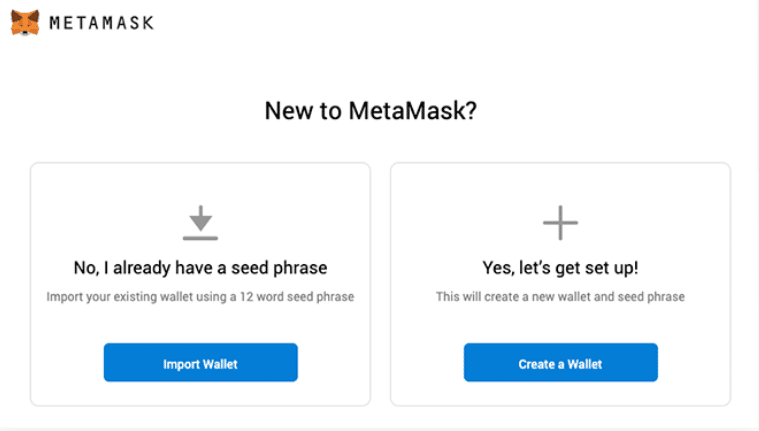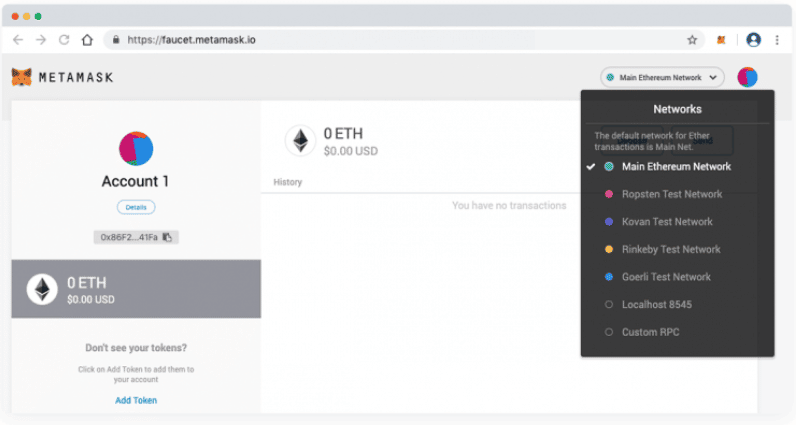Ethereum is known to be a revolutionary blockchain protocol as it introduced the blockchain world with the “smart contract” functionality. Since 2015, when Vitalik Buterin launched Ethereum, many industries have been building decentralized applications, customized web3 solutions, and sub-blockchains on the Ethereum ecosystem. For these use cases of Ethereum, a smart contract is integral for it to act as a backend. in this guide, we will explore how to create smart contracts and deploy them.
At present, the smart contract is no longer a difficult concept to understand, with numerous blockchain projects running successfully on top of blockchain protocols. However, newbie blockchain developers, who are shifting to a decentralized ecosystem from web2, need complete instructions on creating smart contracts from scratch and deploying them.
Against their concern, let’s walk through a complete guide on developing and deploying a smart contract. As mentioned, Ethereum was the first blockchain to introduce smart contracts, and the rest of the blockchains came up with the concept of blockchain. Later, we will understand the step-by-step instructions on how to make smart contracts and deploy. You can hire a top-rated smart contract development company to create your own.
- What is a smart contract?
- 5 Steps to create a smart contract
- 5 Steps to deploy an Ethereum smart contract
- Benefits of developing smart contracts
What is a Smart Contract?

A smart contract is a set of software programs representing self-executing contracts between two or more parties. Blockchain developers write smart contracts with rules and logic encoded to perform the intended actions.
To understand smart contracts in layman’s language, think of this as a decentralized version of real-world contracts where contracts execute once the conditions written in the contracts meet. In technical terms, a smart contract is a stand-alone code script written in Solidity, compiled in JSON and deployed on the blockchain via a unique address.
Similar to how we call some logic through HTTP requests, smart contracts are easily executable with the help of accurate data entering and calling the compiled and deployed functions in Solidity. Therefore smart contracts function as the backend of decentralized applications.
How Do Smart Contracts Work?

Smart contracts contain rules and logic written and stored in the blockchain’s distributed ledger. It works by simply following “if/when and then” statements written as code into the blockchain. With no intermediaries, networks of computers (or nodes) have the authority to ensure that the predetermined conditions in the smart contracts are met. Smart contracts are being implemented as use cases across various industries, from automating the process at government organizations to decentralizing online games. The abow image explains the mechanism of smart contract in plain English so that anyone can understand it.
How to Make Smart Contracts?

While numerous blockchains facilitate the creation and deployment of smart contracts, Ethereum has the proud tag of being the smart contract originator. Therefore, this guide will discuss smart contract development and deployment on the Ethereum blockchain.
Before we dive into the step-by-step process of smart contracts, let’s first understand what Solidity is because smart contracts on Ethereum are written using Solidity.
Solidity is a statistically typed programming language that runs on EVM, Ethereum virtual machine. As a core Ethereum language, Solidity supports the development of smart contracts to support customized decentralized solutions and blockchain ecosystems built and deployed on Ethereum. Now, let’s proceed to create the smart contract.
Install Prerequisites
On Ethereum, you have multiple options to create and deploy smart contracts. From using Remix and waffle to open libraries, Ethereum offers easy-to-use smart contract frameworks for creating smart contracts and testing them before mainnet deployment. For this guide, we will follow the most simplified version of the smart contract development process using Metamask and Remix IDE for writing the contract.
While Metamask is widely known and used as an Ethereum-based decentralized wallet, it also works as a web3 gateway that allows developers to access the Ethereum ecosystem and build smart contracts. With Metamask, developers do not require to install any blockchain or blockchain-related software for dApp development. Also, they escape from the complexities of running a full Ethereum node.
Download Metamask to start programming the smart contract. Metamask is currently available for all four prominent browsers; Chrome, Firefox, Brave and Edge. Here, we are using Metamask for Chrome. To start, first, download Metamask and initialize it.

Once you download the Metamask successfully, you have two options: import your existing wallet using the wallet address or create a new wallet from scratch. Remember that building smart contracts on Ethereum requires you to transact with ether. Hence, keep the Ether balance in your Metamask wallet to deploy smart contracts on the Ethereum ecosystem.

We will choose “create a wallet” to explain smart contract development for beginners who haven’t yet created their first Ethereum wallet on Metamask.
Step1- Create Your Wallet at Metamask
Install Metamask wallet and enable it in your Chrome browser. Upon successful installation, you need to click the Metamask icon on the page’s right. As soon as you click on the icon, a new tab will automatically open with the details related to terms and conditions for the wallet installation and further use.
On the terms and conditions page, click on Create Wallet and then agree to the terms and conditions. Give your consent by clicking on I Agree and proceed further.
For The next step, Metamask asks you to create a strong password consisting of numbers, letters and special characters. Immediately after your password is created, you will receive a secret backup phrase that allows you to back up your Metamask wallet in case you lose the login credentials or the password.

This backup seed phrase is sensitive. Therefore, you should write this phrase on paper and safely keep it somewhere. Alternatively, you can digitally store this secret phrase into a hard drive without access.
Moving further, ensure that you are on the Ethereum mainnet. To ensure it, find the checkmark beside the “Main Ethereum Network”, and you are good to go.
Step2- Switch to Any Ethereum Test Network
Apart from the main Ethereum network, you will see the following test networks in the Metamask wallet, including the following:
- Robsten Test Network
- Kovan Test Network
- Rinkeby Test Network
- Goerli Test Network

Test networks are only to test smart contracts and decentralized applications. The ethers you use on these networks are dummy, meaning these cryptos have no real value.
Step3- Add Test Ethers to Your Metamask Wallet
Before deploying a smart contract on the Ethereum main network, you need to test it on any test network that you prefer. For this, you first need to get test Ethers from the test faucet.
Suppose you want to test smart contracts on the Robsten test network, then switch to this testnet. Initially, you will see 0ETH as a balance in your wallet. From the test faucet, click on the Deposit and then Get Ether to get the desired amount of test Ethers.

For example, you can click on “request 1 Ether from the faucet”, and 1 Ether gets instantly added to your wallet balance. See the below image to understand how Ether reflects in your wallet.
Once you have dummy Ethers in your wallet, it’s time to start writing your smart contract using Remix browser IDE in Solidity.
Step4- Start Writing Smart Contract Solidity
We are using Remix Browser IDE to write smart contract code in Solidity at this stage. We choose Remix because it offers a variety of robust features and a seamless development experience to web3 developers.
The remix is often said to be suitable for writing smaller-sized contracts. That said, the development type depends on how developers use Remix to build contracts for decentralized applications.
The unique features of Remix make it a go-to smart contract development framework.
Step5- Creating .sol Extension File
Open Remix Browser and click the plus icon that you find on the left side. Now, create a .sol extension file.
Step6- Creating a Sample Smart Contract Code for ERC20 Token Creation
pragma solidity ^0.4.0;
import “./ERC20.sol”;
contract myToken is ERC20{
mapping(address =>uint256) public amount;
uint256 totalAmount;
string tokenName;
string tokenSymbol;
uint256 decimal;
constructor() public{
totalAmount = 10000 * 10**18;
amount[msg.sender]=totalAmount;
tokenName=”Mytoken”;
tokenSymbol=”Mytoken”;
decimal=18;
}
function totalSupply() public view returns(uint256){
return totalAmount;
}
function balanceOf(address to_who) public view
returns(uint256){
return amount[to_who];
}
function transfer(address to_a,uint256 _value) public
returns(bool){
require(_value<=amount[msg.sender]);
amount[msg.sender]=amount[msg.sender]-_value;
amount[to_a]=amount[to_a]+_value;
return true;
}
}
Next, compile Ethereum smart contract code from the Remix IDE and prepare for deployment.
How to Test The Smart Contract?

- From the contract code mentioned in above code, you need to run and test your smart contracts such as transfer, total supply, and balance. Using the Remix window, you can again find these methods across the right-hand side.
- To test the smart contract, transfer some amount of tokens to any Ethereum wallet address. Once the transfer is done, call the balance method, and check the remaining wallet balance and address to ensure the transaction is successful.
- Run the total supply method to determine the total supply.
How to Deploy Ethereum Smart Contract?

- To deploy your smart contract and make it live; you need to switch to the Ethereum mainnet on Metamask.
- Feed your wallet with some real Ethers.
- Use Remix to deploy your contract by following the steps given above.
- Once you deploy the smart contract, visit http:// www.etherscan.io and search for your contract address.
- Select your smart contract from the search result and click “verify the contract” for contract verification purposes.
- Go to Etherscan and copy your smart contract code. Make sure you select the same compiler that you used for compiling code in Remix.
- Select optimization if you have selected optimization in Remix. Or else, select No.
- Within a few seconds, your smart contract will go live.
- Once live, you can run smart contract methods at Ethereum.
FAQ’s on Smart Contract Development
1. What are The Tools and Technologies Required for Smart Contract Development?
Smart contracts use blockchain as the underlying technology and smart contract development tools, including:
- Web3.js
- Ganache CLI
- Node.js
- Visual Studio Code
- Ethereum framework and programming languages like Solidity, Vyper, Rust, Remix, Chainlink, etc.
2. How Much Does it Cost to Develop a Smart Contract?
Smart contract development cost highly depends on the features you add to it. On average, smart contracts can be developed somewhere between $10K to 15K.
3. How Can I Create a Smart Contract with Metamask?
Metamask is a wallet extension that allows you to access the Ethereum ecosystem. Once connected to metamask, you need to test Ethers to write the smart contract in Remix IDE and then finally test the smart contract and deploy it on the mainnet.
4. Is Creating a Smart Contract Hard?
With simple steps (like, mentioned in this blog) and with Web3 wallet extensions like Metamask, you can build smart contracts for your dApps.
5. How Much do Smart Contract Developers Make?
The average salary of a smart contract developer is $120k annually. Talking about the minimum salary, it’s $65k and a maximum of $200k. (based on the data from web3.career.)
6. Can Anyone Make a Smart Contract?
Developers with basic knowledge can use API and build customized smart contracts.
At The NineHertz, we have a dedicated team of blockchain developers who build and deploy smart contracts for various purposes. If you want to build a smart contract, connect with us to discuss your project requirement.
Great Together!

![How to Create an App like Careem? [Cost in 2025]](https://theninehertz.com/wp-content/uploads/2024/09/how-to-create-an-app-like-careem.webp)

![How to Create an AI-Powered Wellness App? [2025 Guide]](https://theninehertz.com/wp-content/uploads/2025/11/how-to-create-an-ai-powered-wellness-app.webp)





